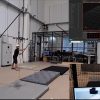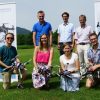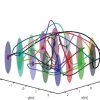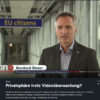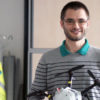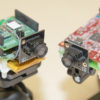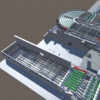Sensors and in particular cameras have found their way into many parts of our daily lives. While monitoring public places is still a common use case for camera systems, applications in private environments are emerging. The ever growing number of cameras raises important questions concerning security and privacy. “Our approach to tackle these questions is to protect all sensitive data before it leaves the camera,” explains Bernhard Rinner. “We exploit the available computing resources of modern camera systems for onboard privacy protection and data security and do not rely on pure software solutions. We have successfully demonstrated this approach on several prototypes.”
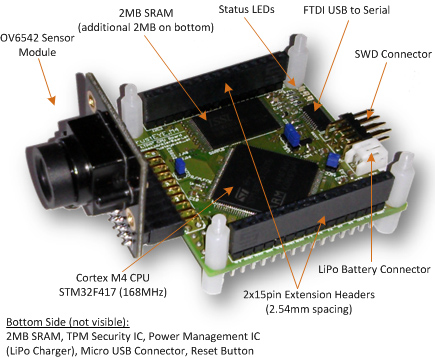
The key idea is to “protect” access to the image sensor and encapsulate dedicated security and privacy functionality in a TrustEYE—a secure sensing unit embedded on the smart camera. The TrustEYE has exclusive access to the image sensor’s raw data. It separates sensitive from non-sensitive data by applying dedicated image analysis and ensures that only non-sensitive data is made available to the camera host system.
TrustEYE.M4 platform for secure and privacy-aware visual sensor networks.
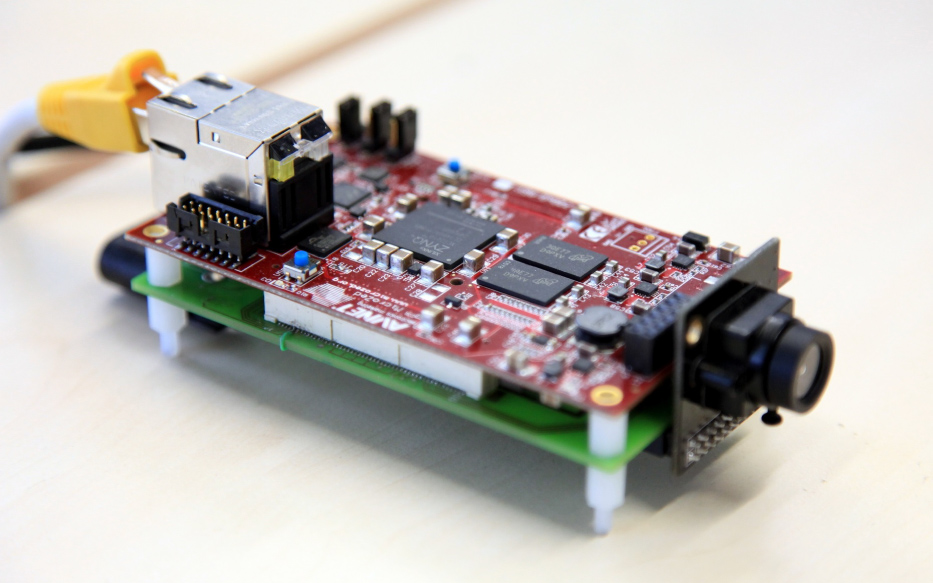
“In another prototype, we use modern hybrid ARM/FPGA system-on-chip solutions to provide security and high speed image analysis functions,” Ihtesham Haider points out. “We exploit inherent hardware properties in the form of physical unclonable functions to realize high levels of security without requiring additional specialized hardware for cryptographic functions.”
System-on-chip prototype with onboard security functionality. Key generation based on physical unclonable functions, sensed data attestation, and secure boot of the sensor controller are implemented on a Xilinx Zynq7010.
Privacy protection is achieved by intentionally distorting sensitive regions of the captured images. In a first approach we have developed so-called cartooning privacy filters which preserve privacy while ensuring a minimum reduction of the image fidelity and run onboard of our TrustEYE platform.
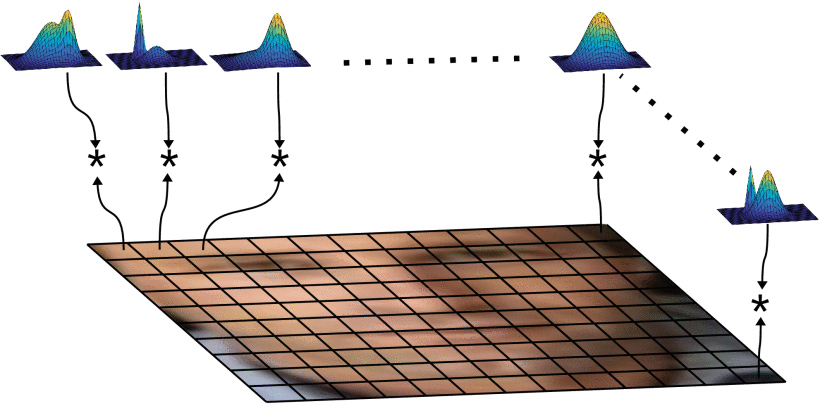
Another approach was devoted towards privacy protection in recreational videography from small drones that can capture bystanders who may be uncomfortable about appearing in those videos. We have developed a robust spatio-temporal hopping blur filter that protects privacy through de-identification of face regions. Our filter distorts a face region with secret parameters to be robust to naïve, parrot and reconstruction attacks. The distortion is minimal and adaptive to the resolution of the captured face: we select the smallest Gaussian kernel that reduces the face resolution below a certain threshold. This privacy filter is for on-board installation and produces temporally smooth and pleasant videos.
Visualisation of hopping blur filtering. The face region is divided into sub-regions and each sub-region is convolved with a hopping Gaussian mixture model kernel based on random parameters.
Funded projects
- Progressing towards Secure, cooperating smart Cameras (ProSecCo)
Principal investigator. Funding from FFG, 2014-2017 - Trustworthy Sensing and Collaboration in VSN (TrustEYE)
Principal investigator. Funding from KWF, 2012-2015
Selected publications
- Omair Sarwar, Bernhard Rinner and Andrea Cavallaro. A privacy-preserving filter for oblique face images based on adaptive hopping Gaussian mixtures. IEEE Access, 7:142623-142639, 2019.
- Bernhard Rinner. Can we trust smart cameras. Computer, 52(5):67-70, 2019.
- Omair Sarwar, Andrea Cavallaro and Bernhard Rinner. Temporally smooth privacy protected airborne videos. In Proceedings of the IEEE/RSJ International Conference on Intelligent Robots and Systems (IROS 2018), Madrid, Spain. October 2018.
- Ihtesham Haider, Michael Hoeberl and Bernhard Rinner. Trusted Sensors for Participatory Sensing and IoT Applications based on Physically Unclonable Functions. In Proceedings of the 2nd International Workshop on IoT Privacy, Trust, and Security (IoTPTS), Xi’an, China. May 2016.
- Thomas Winkler and Bernhard Rinner. Security and Privacy Protection in Visual Sensor Networks: A Survey. ACM Computing Surveys, 47(1):pages 38, 2014.
- Adam Erdelyi, Tibor Barat, Patrick Valet, Thomas Winkler and Bernhard Rinner. Adaptive Cartooning for Privacy Protection in Camera Networks. In Proceedings of the IEEE International Conference on Advanced Video and Signal-Based Surveillance (AVSS), Seoul, Korea. August 2014.
- Thomas Winkler and Bernhard Rinner. Securing Embedded Smart Cameras with Trusted Computing. EURASIP Journal on Wireless Communications and Networking, Article ID 530354, 20 pages, 2011.
